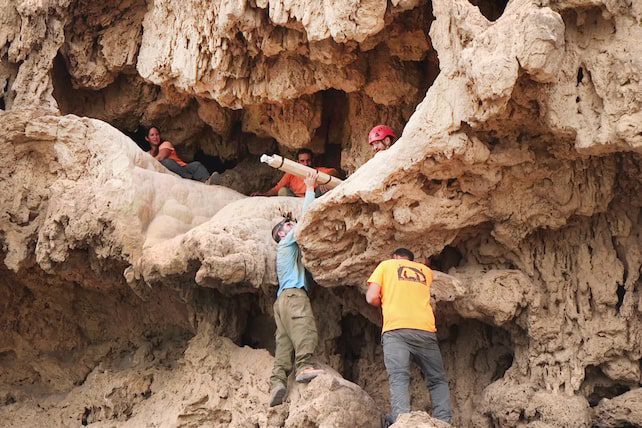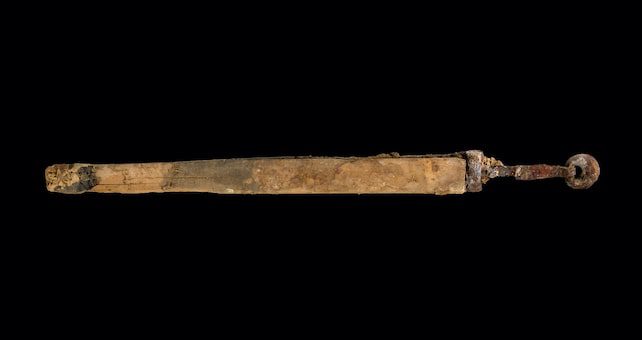JERUSALEM (RNS) — Fifty years ago, Israeli archaeologists discovered an ancient Hebrew inscription on a stalactite in a remote cave in the desert east of Jerusalem, where the land begins to slope down toward the Dead Sea. In June, hoping to find additional inscriptions not visible to the naked eye, three researchers—an archaeologist, a geologist and a photographer trained in multi-spectral photography—returned to the cave.
While exploring a new level of the cave, one of the researchers discovered the iron head of a Roman javelin, known as a “pilum,” in a hidden narrow crevice.
The trio immediately contacted the Israel Antiquities Authority, which has been conducting a systematic search of Judean desert caves for the past six years with the goal of keeping any remnants of Dead Sea scrolls or other ancient artifacts in the archaeology-rich region out of the hands of looters and off the black market.
Soon after discovering the javelin, the archaeologists discovered a cache of four 1,900-year-old swords, all of them remarkably well-preserved. Even more remarkable were the swords’ wood and leather accessories, which the desert’s arid climate had prevented from decaying.
Three of the swords were identified as Roman spatha swords, with 2-foot-long blades, and a shorter weapon, a ring-pommel sword, with an 18-inch-long blade.
The weapons were most likely left in the cave by Jewish rebels involved in the 132 to 136 C.E. Bar Kokhba revolt, the Jews’ final attempt to force the Romans out of the ancient land of Israel after nearly two centuries of occupation. During the revolt, bands of Jewish fighters and refugees lived in the caves that dot the forbidding Judean landscape.
The uprising failed, and the Romans expelled most of the surviving Jews and changed the territory’s name from “Judaea” to “Syria Palaestina.”
The swords may represent a small victory amid this defeat. “It appears that the weapons were hidden by the Judean rebels, after they were seized from the Roman army as booty,“ the IAA said in a statement.
For the archaeologists, the discovery is a major triumph. “Finding a single sword is rare—so four? It’s a dream! We rubbed our eyes in disbelief,” the researchers wrote.
The swords were discovered in what is today the En Gedi Nature Reserve, about 100 miles from Jerusalem, according to Eitan Klein, who co-directed the IAA’s sweeping excavation of the cave after the first weapon was discovered.



